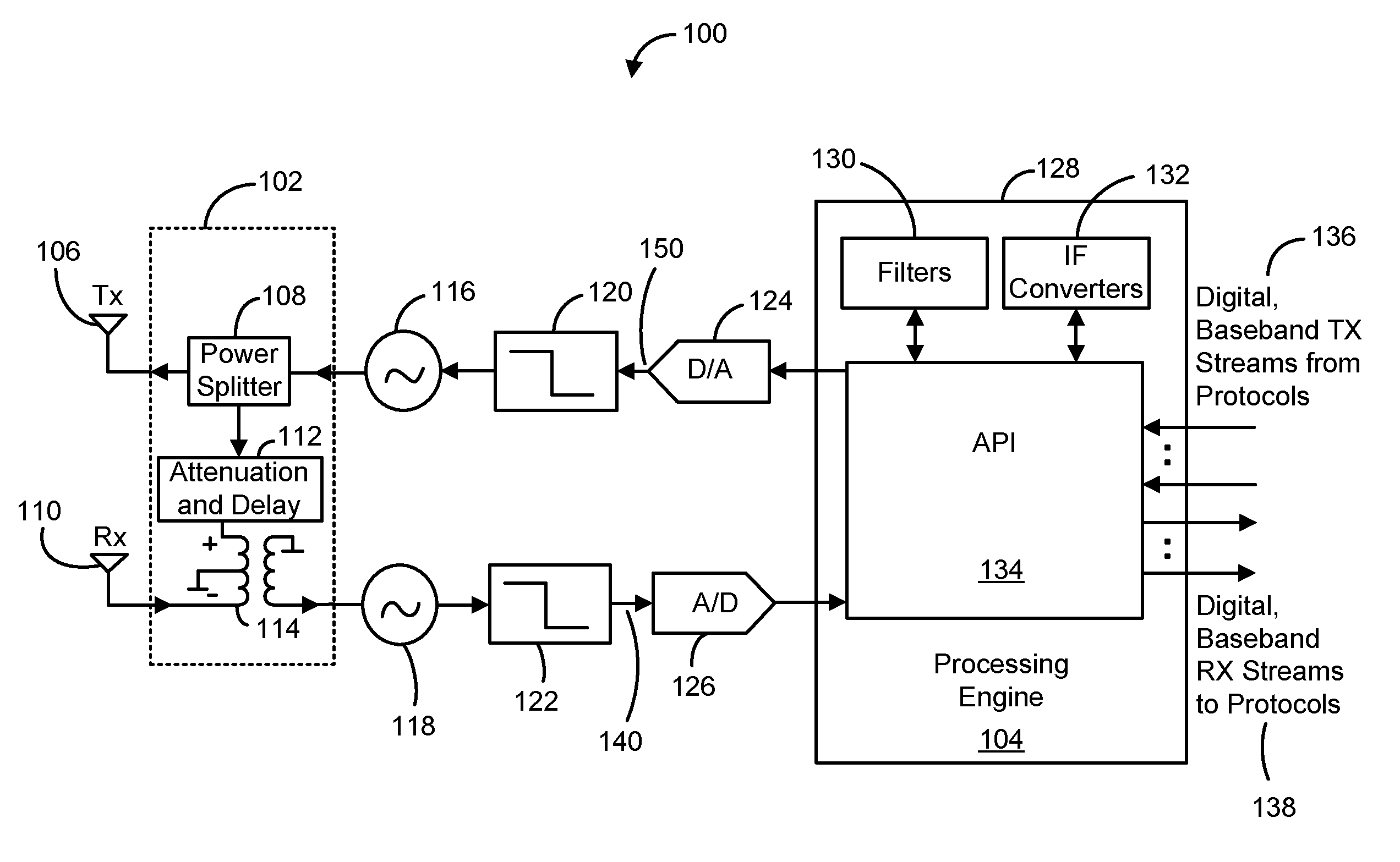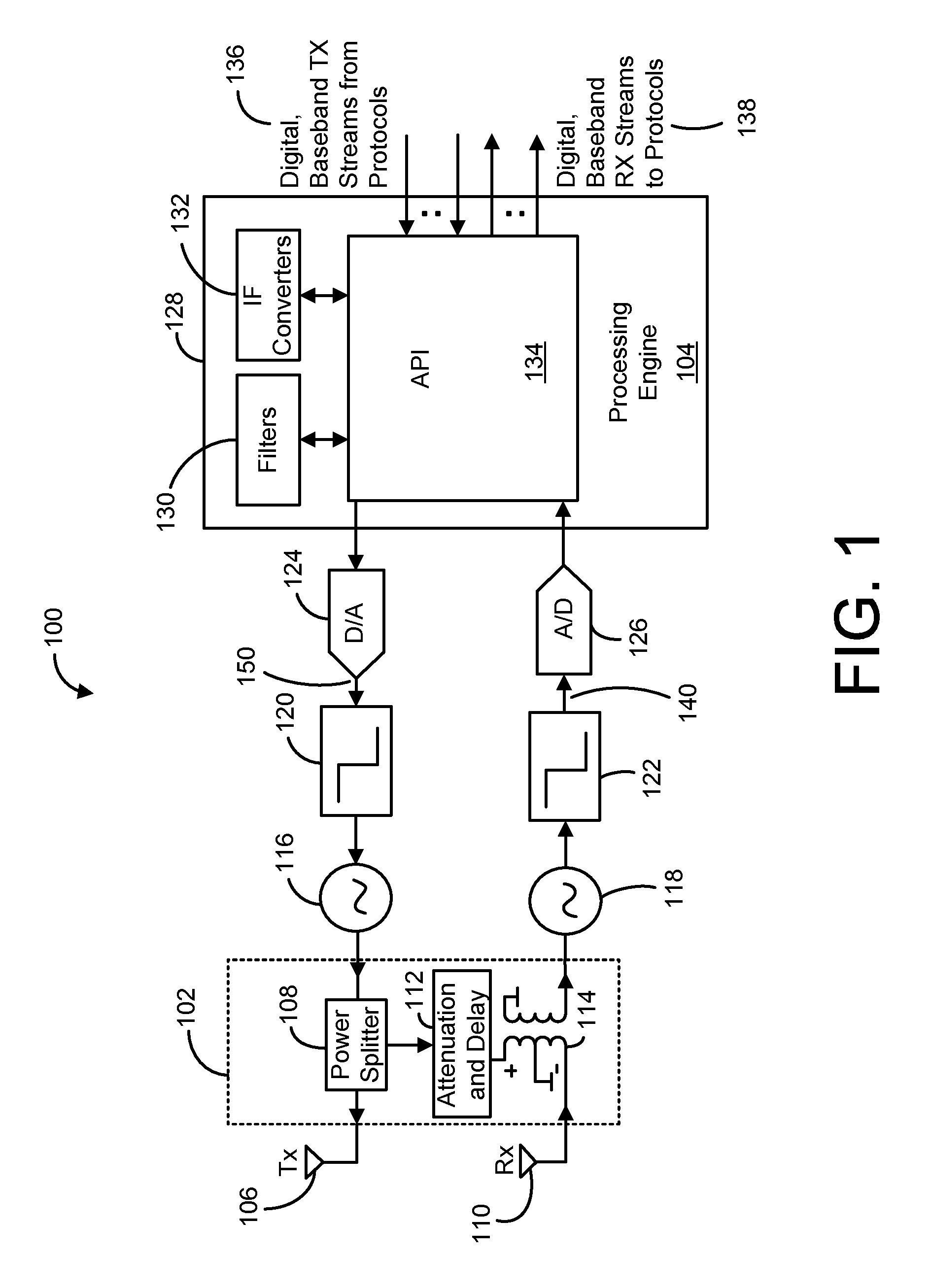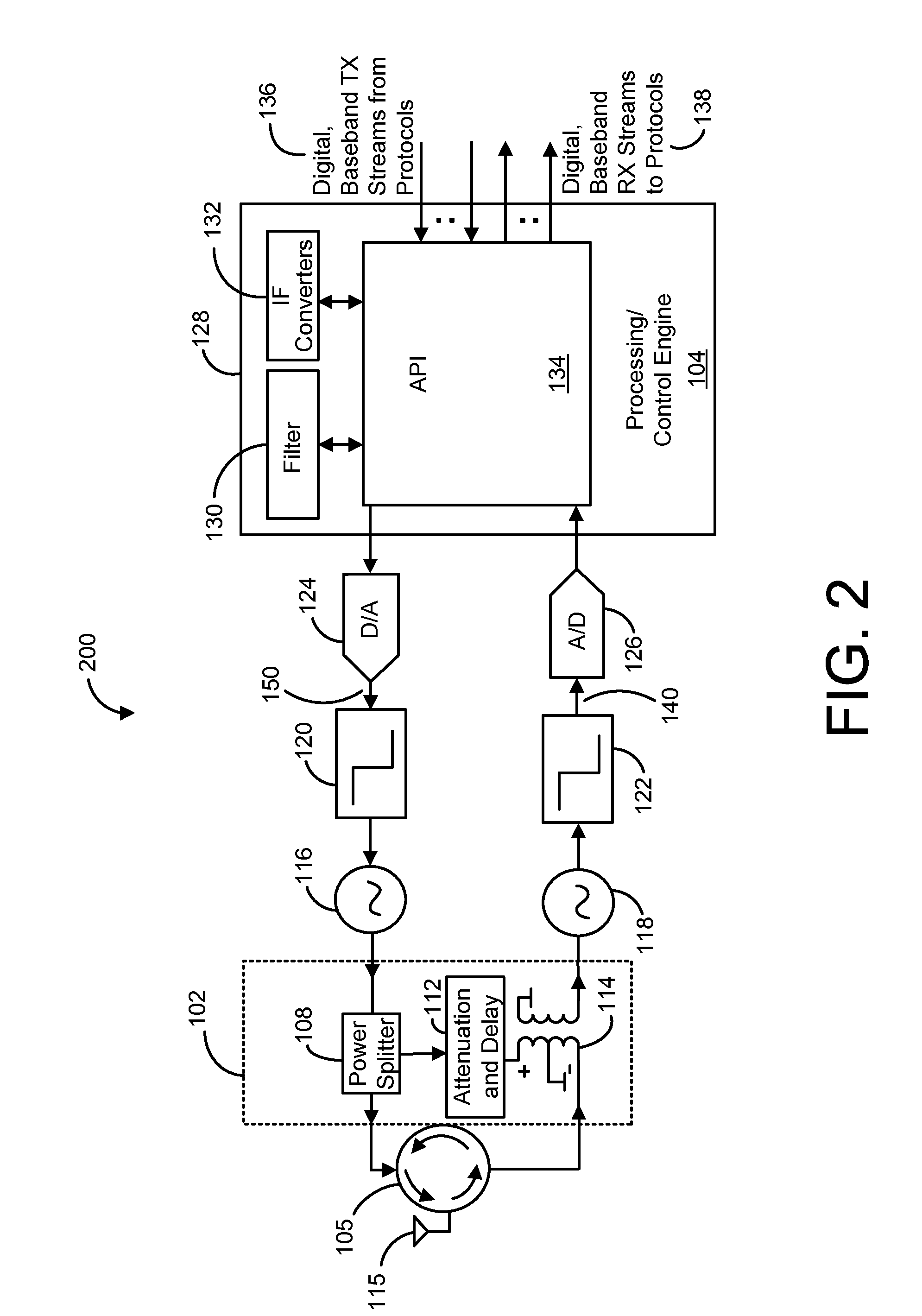Systems and methods for cancelling interference using multiple attenuation delays
a technology of attenuation delay and interference cancelling, which is applied in the direction of transmission control/equalisation, radio transmission, electrical equipment, etc., can solve the problems of system ineffective receiving the desired signal and the challenge of reducing the self-interference signal in the full-duplex wireless communication system, and achieve the effect of reducing the self-interference signal
- Summary
- Abstract
- Description
- Claims
- Application Information
AI Technical Summary
Benefits of technology
Problems solved by technology
Method used
Image
Examples
Embodiment Construction
[0025]FIG. 1 is a simplified block diagram of a full-duplex wireless communication device 100, in accordance with one embodiment of the present invention. Wireless communication device 100, which may be a cellular phone, a base station, an access point or the like, is configured to transmit data / signals via a downlink and receive data / signals via an uplink. Wireless communication device (herein alternatively referred to as device) 100 is shown, as including, in part, a digital-to-analog converter (DAC) 122, a filter 120, a frequency upconverter 116, and a transmit antenna 106 disposed in the transmit path 150. Device 100 is further shown as including, in part, a receive antenna 110, a frequency down converter 118, a filter 122, and an analog-to-digital converter (ADC) 126 disposed in the receive path 140. Device 100 is also shown as including a processing engine 104, and a self-cancellation circuit 102. Processing engine 104 is configured to control / process various operations as des...
PUM
 Login to View More
Login to View More Abstract
Description
Claims
Application Information
 Login to View More
Login to View More - R&D
- Intellectual Property
- Life Sciences
- Materials
- Tech Scout
- Unparalleled Data Quality
- Higher Quality Content
- 60% Fewer Hallucinations
Browse by: Latest US Patents, China's latest patents, Technical Efficacy Thesaurus, Application Domain, Technology Topic, Popular Technical Reports.
© 2025 PatSnap. All rights reserved.Legal|Privacy policy|Modern Slavery Act Transparency Statement|Sitemap|About US| Contact US: help@patsnap.com



